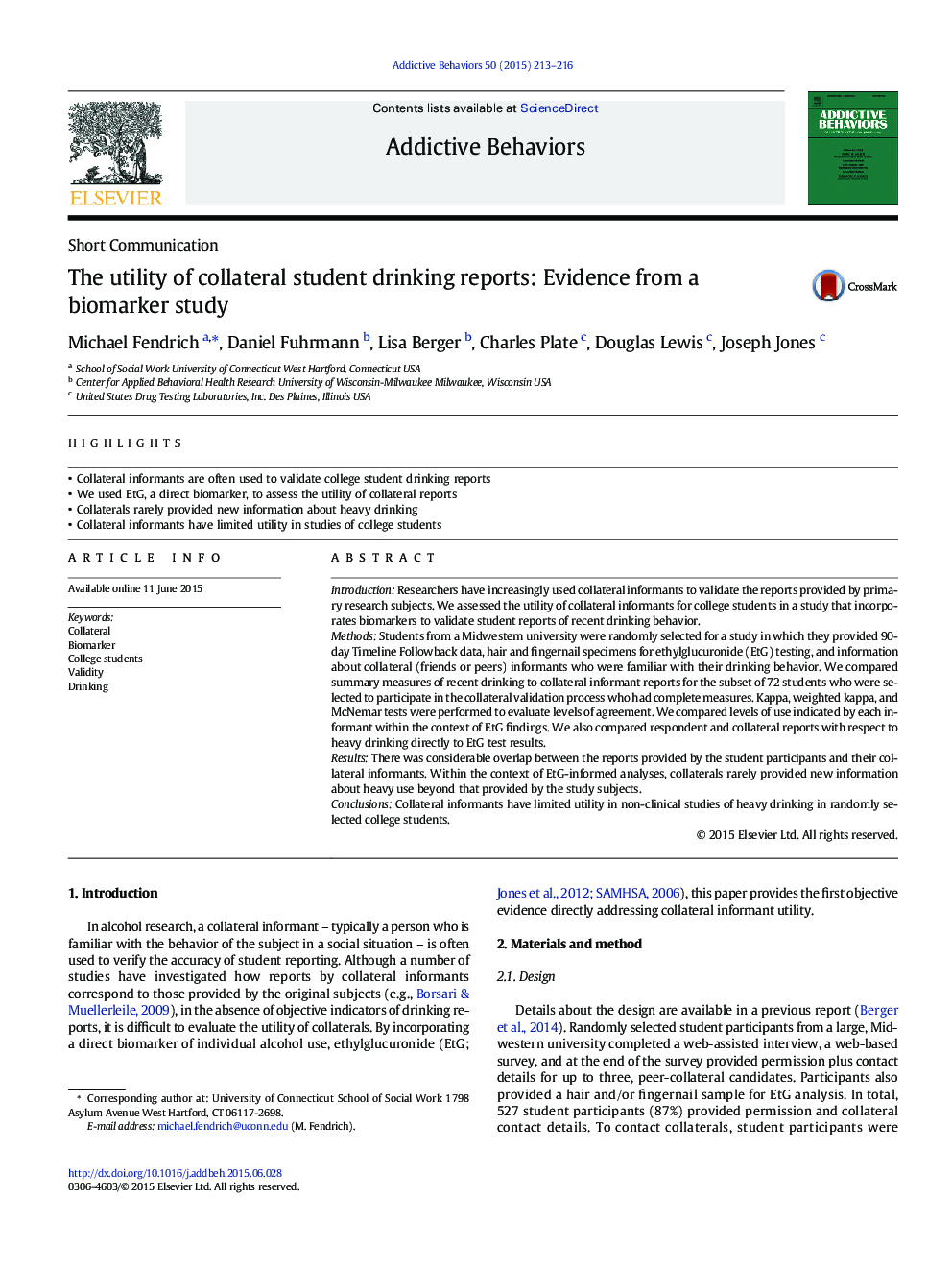| Article ID | Journal | Published Year | Pages | File Type |
|---|---|---|---|---|
| 898666 | Addictive Behaviors | 2015 | 4 Pages |
•Collateral informants are often used to validate college student drinking reports•We used EtG, a direct biomarker, to assess the utility of collateral reports•Collaterals rarely provided new information about heavy drinking•Collateral informants have limited utility in studies of college students
IntroductionResearchers have increasingly used collateral informants to validate the reports provided by primary research subjects. We assessed the utility of collateral informants for college students in a study that incorporates biomarkers to validate student reports of recent drinking behavior.MethodsStudents from a Midwestern university were randomly selected for a study in which they provided 90-day Timeline Followback data, hair and fingernail specimens for ethylglucuronide (EtG) testing, and information about collateral (friends or peers) informants who were familiar with their drinking behavior. We compared summary measures of recent drinking to collateral informant reports for the subset of 72 students who were selected to participate in the collateral validation process who had complete measures. Kappa, weighted kappa, and McNemar tests were performed to evaluate levels of agreement. We compared levels of use indicated by each informant within the context of EtG findings. We also compared respondent and collateral reports with respect to heavy drinking directly to EtG test results.ResultsThere was considerable overlap between the reports provided by the student participants and their collateral informants. Within the context of EtG-informed analyses, collaterals rarely provided new information about heavy use beyond that provided by the study subjects.ConclusionsCollateral informants have limited utility in non-clinical studies of heavy drinking in randomly selected college students.
